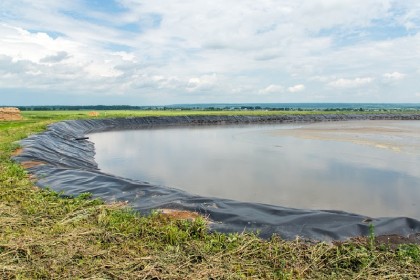
Chemical Fertiliser: The Lowdown
Anyone who has knowledge about growing fruit, vegetables and other plants understands the value of using fertilisers. There are different fertilisers used for different purposes, however, and finding the right formula is imperative for your plants’ nutritional needs. Some plants require more of a mineral than others do, and too much of a certain element may have the complete opposite effect.
Fertilisers are different from compost, and chemical fertilisers even more so. Chemical fertilisers are synthetically made and are typically rich in nitrogen, phosphorus, and/or potassium. Depending on the necessary formula, they may be enhanced with sulphur, magnesium, and calcium.
What are the Types of Chemical Fertilisers?
The term “chemical fertiliser” refers to any number of synthetic compound substances mixed specifically to increase crop yield. Complex (or blended) chemical fertilizers often contain a mix of ammonium phosphate, nitro-phosphate, potassium, and other nutrients. The right chemical fertiliser depends on the type of plants you’re ‘feeding’, the climate, and the environment. Using fertiliser incorrectly can result in poor-quality produce, or can potentially even kill your plants.
The different types of chemical fertilisers include:
Nitrogenous Fertilizers
- Nitrate fertiliser e.g., sodium nitrate
- Ammonium fertiliser e.g., ammonium sulphate
- Nitrate and ammonium fertilisers e.g., ammonium sulphate
- Amide fertilisers e.g., urea
Potassium Fertilisers
- Potassium chloride
- Potassium sulphate
- Potassium nitrate
Phosphatic Fertilisers
- Calcium dihydrogen phosphate
- Ammonium phosphate
- Ammonium hydrogen phosphate
3 Types of Blended Chemical Fertilisers
Ammonium Sulphate
Ammonium sulphate is a nitrogen-based fertiliser that can be absorbed by the plants from the soil.
Calcium Ammonium Nitrate
Calcium ammonium nitrate is also nitrogenous and can be absorbed directly by plants.
Urea
Urea has the highest nitrogen percentage of all the typical chemical fertilisers, with 46%. Urea is used alongside urease inhibitors to prevent the loss of nitrogen through a chemical reaction.
Chemical Fertiliser Benefits
The most notable benefit of chemical fertiliser is that they are faster, more efficient, and much more affordable than their organic counterparts. There are a host of other benefits such as:
- Blended chemical fertilisers typically have slow-release properties that allow for continued growth over longer periods.
- Especially in commercial settings, chemical fertilisers service large-scale areas and are tailor-made for specific crops and climates to ensure optimal growth.
- Chemical fertilisers maximise crop yield and increase plant production.
- Can turn poor-quality soil into soil fit for sustainable growth.
- Chemical fertilisers yield fast results that can be recognised immediately.
- Chemical fertilisers are reasonably easy to use.
- Unlike organic fertiliser, chemical fertilisers are easily mixed with other components, making them extremely versatile.
With the help of professionals in the fertiliser industry, whatever your operation, choosing the right fertiliser and using it responsibly is simple. For more information on these and other planting and agricultural tools, visit our directory.












